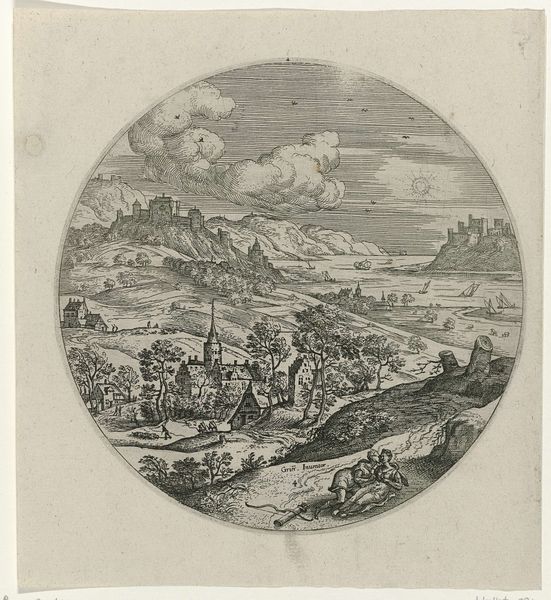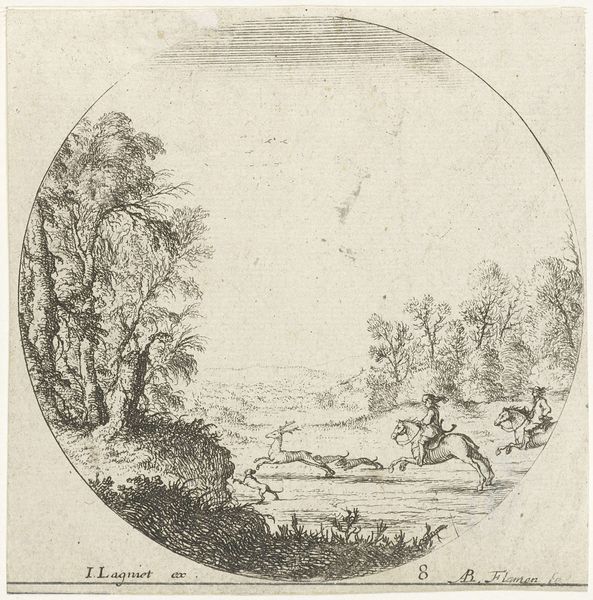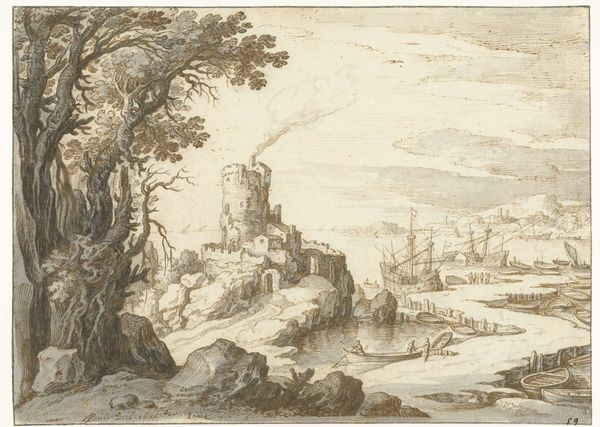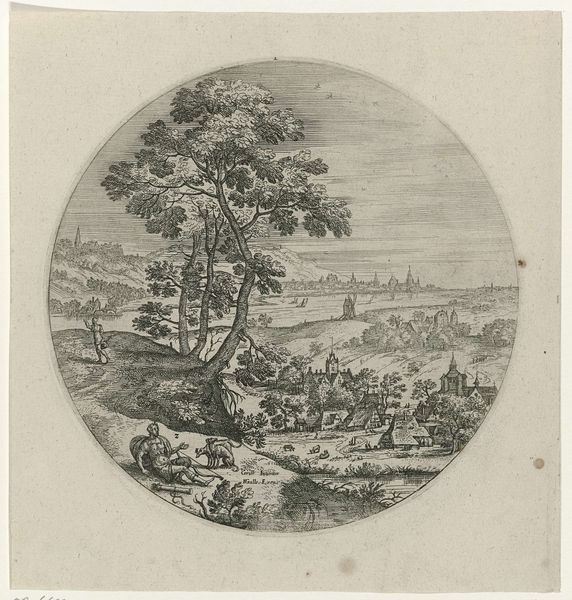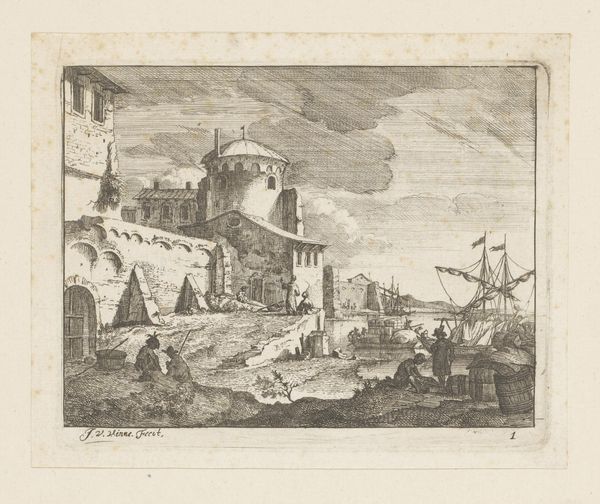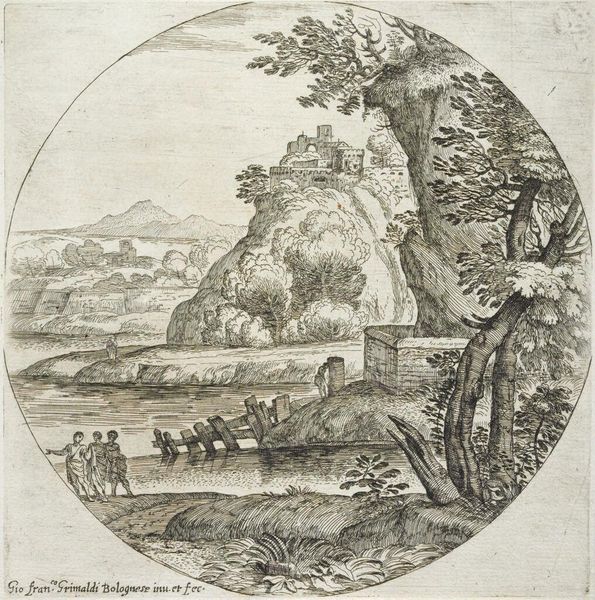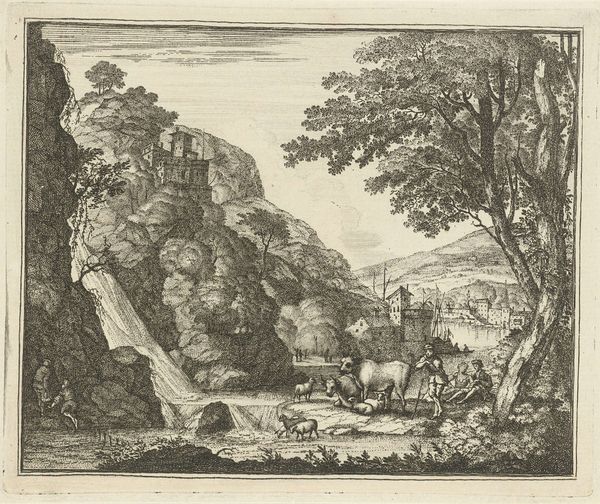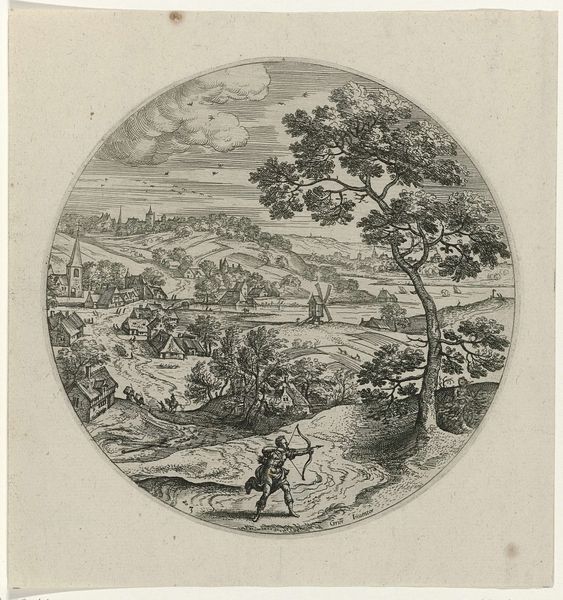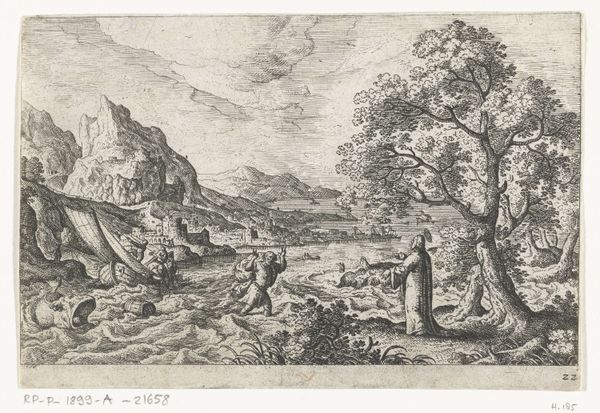
print, etching, engraving
#
dutch-golden-age
# print
#
pen sketch
#
etching
#
pencil sketch
#
old engraving style
#
landscape
#
genre-painting
#
engraving
Dimensions: height 103 mm, width 103 mm
Copyright: Rijks Museum: Open Domain
Editor: So, this is Albert Flamen's "Landschap met kudde schapen," dating roughly from 1648 to 1683. It’s an etching, a scene teeming with life contained within this almost… porthole view. The first thing that strikes me is this sense of rustic chaos, all swirling within a tidy circle. What do you see in this piece? Curator: It’s fascinating, isn't it? What I see here is a representation deeply entwined with the social and economic fabric of the Dutch Golden Age. The landscape, the sheep, even the fleeing woman—they’re not just picturesque elements. Consider who owned land, who worked it, and who profited. Is this idealized rural life a reflection of reality, or a carefully constructed narrative serving a particular social class? Editor: That's a really interesting angle. I hadn't considered that. So, the woman running after the animals... Is she just part of the scenery, or is there more to it? Curator: Precisely! Her hurried action hints at the labor involved in managing this pastoral scene. We might consider this within a broader framework of gendered labor during the period and to reflect upon a society still not free from slavery. Who does the hard work? Who benefits? This scene allows us to reflect upon a power dynamic presented as bucolic entertainment, especially considering the relationship to colonial exploitation happening elsewhere. Do you see the political undertones? Editor: Now that you mention it, framing this idyllic scene within the circle feels like a way to contain it, almost like an item being sold and resold on the market. Is that reaching too far? Curator: Not at all. That critical interpretation aligns perfectly with thinking about art as commodity, and landscape as a claim of ownership. The very act of depicting the landscape transforms it into property, something controlled and consumed visually. Editor: This makes me reconsider how seemingly simple pastoral scenes can be charged with commentary about society. Curator: Exactly! Question everything. What seems like a simple depiction holds a more complex, layered history. The art is in observing our assumptions. Editor: I'll never look at another landscape the same way again.
Comments
No comments
Be the first to comment and join the conversation on the ultimate creative platform.
